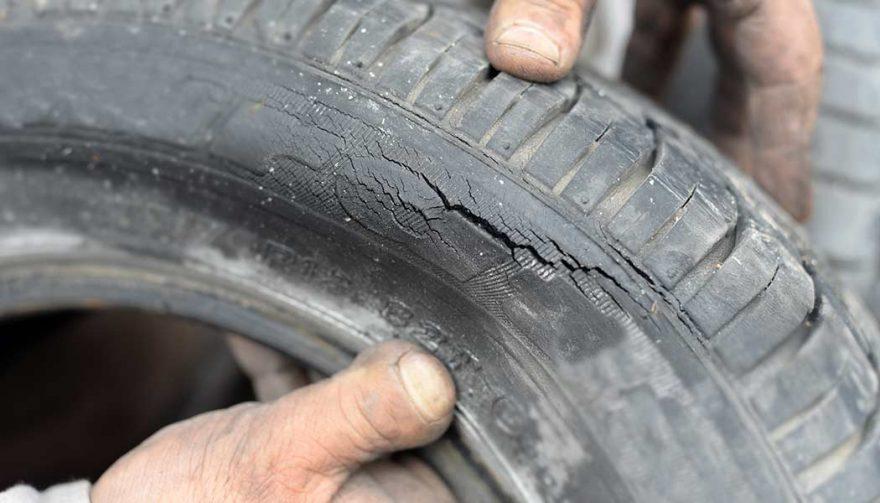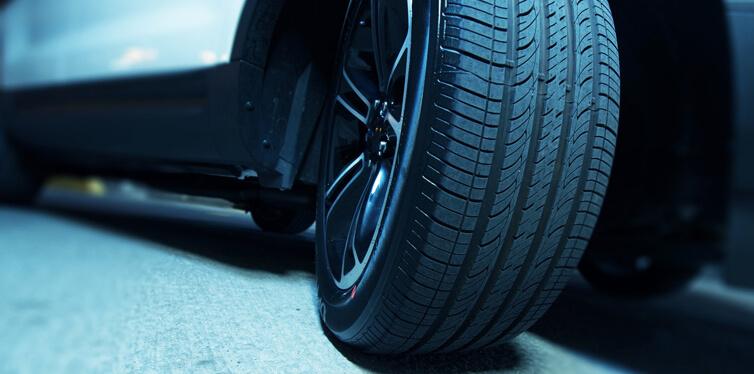How To Fix Dry Rotted Tires: A Systematic Guide
Dry rot can completely damage a tire if the problem is not caught early. The worse thing is that no mechanic will agree to repair it. But you can do it at home if you know how to fix dry rotted tires.
How To Fix Dry Rotted Tires: A Systematic Guide
Tires are dry-rotted when they turn brittle and dry because of long-term inactivity, dirt accumulation, years of exposure to scorching sunlight, and driving continuously with low air pressure. Such a condition can drastically reduce their lifespan even if the decay just sets in.
According to tire manufacturer Goodyear, environmental factors also cause tire aging to happen faster, including parking outdoors for long periods, under-inflated tires, high temperatures, and not using the vehicle regularly… In particular, leaving tires in constant contact with ozone-generating sources such as electric motors, generators or welding equipment can also cause tires to age quickly, because ozone is a strong oxidant.
In the first stage, rotten tires will have hair-like cracks on the surface of the tire sidewall, difficult to see when not observed. After that, the cracks will expand and extend onto the tire tread. Next, the dark black color of the tire will turn brown, ash gray, or worse, white gray.
Let’s find out how to protect your tires from this corrosive condition:
1. Materials needed for fixing dry rotting
- Water-based tire oils
- A water-based tire degreaser
- A large sponge
- Water hose
2. Methods for fixing dry rotting
- Examine the tires to find out the extent of the damage. Some places could be worn out while other areas might have some cracking on the walls. If the damage is too deep, you have no option but to replace the tires.
- Dab a sponge with a water-based tire degreaser and apply it to every inch of the tire. Do it twice and then rinse it with lukewarm water. Lastly, air-dry the tire for at least two hours.
- Buy water-based tire oils if the damage is nothing more severe than some sidewall cracks. Silicone-based and petrochemical oils do more harm than good. They strip the tires off their protective wax layer and expose them to UV rays for more decay.
- Apply the tire oil on each part of the tire. It creates a layer on the tire’s surface to protect it from ozone and UV rays. Keep doing it every 20 to 30 days. However, experts alert that petroleum components will cause tires to age faster when used regularly for a long time.

See more
- What Should be the Frequency of Tire Rotation?
- Tire Pressure Sensor Not Working? Here’s How to Fix It
How To Keep Tires From Dry Rotting
Replacing the tires requires loads of money. You already know that repairing dry rotted tires just slows down the process, not restoring them to the previous condition. Besides learning how to fix dry rotted tires, you can follow these tips to prevent the deterioration:
- Park the car in the shade. The UV light from sun rays hastens the crumbling of the external rubber layer. The first preventive step you can take is to keep the tires away from sunlight as much as possible. Park them in a garage or parking lot with an awning, especially when you park for hours. If you can’t find a shaded place, at least keep the car under a cover or cover the tires with tarpaulin pieces.
- Tires decay if they are not used for months or years. So, don’t keep your vehicle idle in the garage for a long time. If you have spare tires, either sell or use them.

- Never drive your car with under-inflated tires. Check the owner’s manual to find out the right tire pressure. Driving with low tire pressure causes dry rot to set in early.
- Use a good quality tire sealant to slow down the decaying process and protect the exterior part from UV rays and ozone chemicals. Some tire conditioners contain petroleum ingredients as solvents, creating a shiny black effect on the surface. Applying them every 30 days or more frequently given the weather is bad will produce better results.
Tire rubber will wear out over time due to environmental conditions, the plywood and rubber fibers separate, causing the tire to dry rot and reduce its load capacity. Each type of tire has a different lifespan and quality depends on many factors such as temperature, storage conditions, and usage conditions. Typically, manufacturers recommend a tire lifespan of about 6 – 10 years. However, drivers should regularly check the condition of their tires.
Using expired tires along with external influences such as temperature and pressure due to speeding, overloading the vehicle, hitting potholes, or being hit by sharp objects will cause the tire to explode easily. We hope that the information on this topic will be useful for you.














